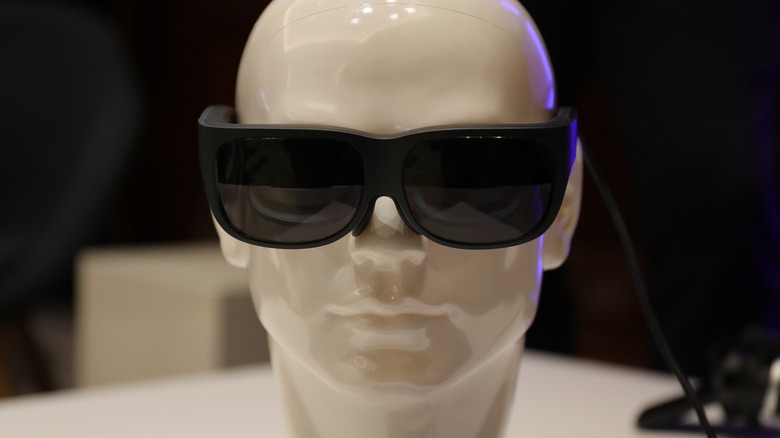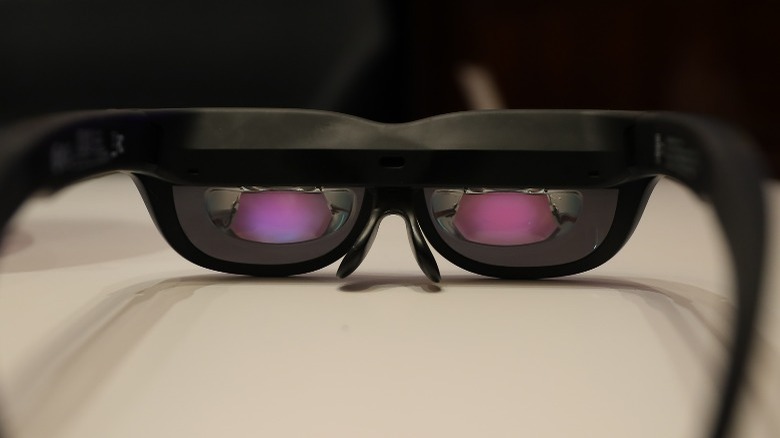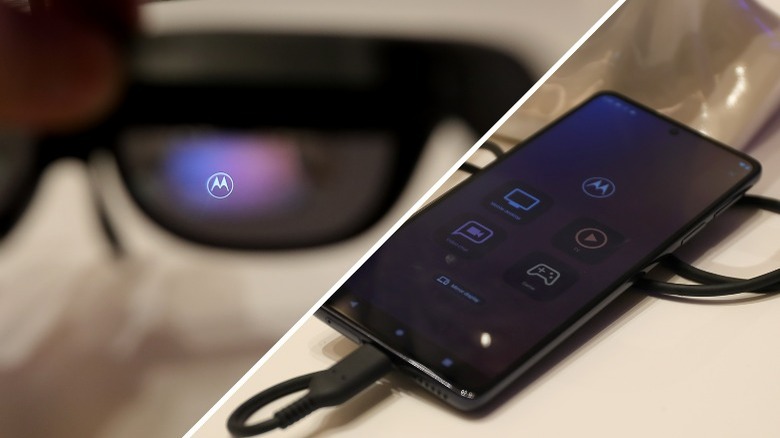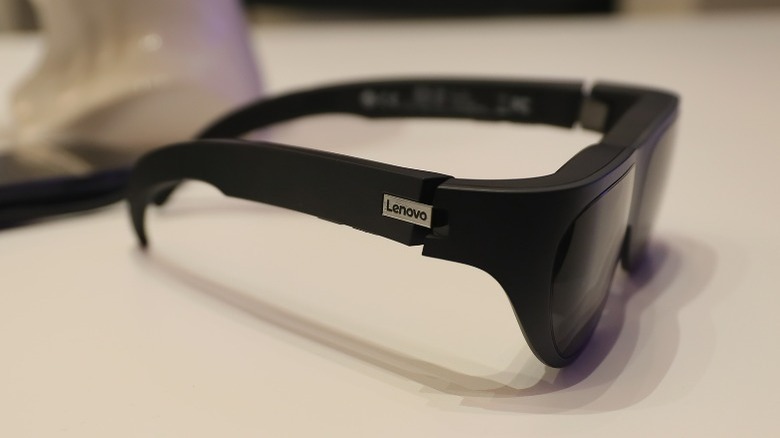Lenovo Glasses T1 Hands-On: So Simple, They Might Just Work
Over the past half-decade, we've seen our fair share of so-called "smart glasses." We've been experiencing and embracing the odd nature of the wearable headset, but remain conscious of the fact that making a successful pair of smart glasses would be akin to lightning striking the same place twice — both rare and shocking.
Early prototype headwear turned to vaporware traces its history back to infamous examples like Google Glass. Brands large and small have tried their luck with it. Turning a tried-and-true bit of engineering like a pair of glasses into something more magical requires that a creator strike a balance between full-force extravagance and simple delight. But Lenovo might've figured out the right equation to bring a sensible pair of smart glasses to consumers.
This isn't the first time Lenovo has dabbled in smart glasses, but it is the first time they've aimed said wearable devices at consumers. Unlike other wearables revealed this year, Lenovo's glasses look relatively inconspicuous, unless you're up close and personal with the wearer. The features and functionality of this pair of glasses present a simple way to extend one's computing and entertainment beyond their phone, tablet, or notebook computer, without running with other unnecessary features.
Comfortable smart glasses you won't hate wearing
This isn't yet the sort of device that you need in order to get by everyday. Instead, the Lenovo Glasses T1 make it obvious that we've been missing the in-glasses display system it delivers.
These glasses are comfortable, courtesy of their abundance of rubbery, soft, and seemingly hearty materials and coatings. The glasses can work with prescription lenses, but do not need to. Our experience suggested that the Lenovo Glasses T1 could be worn for long periods of time without significant discomfort.
It'll be interesting to see how these glasses are used by the average consumer. Will their use tend to pair with certain sorts of consumers — sports enthusiasts, teachers? Or will they be more popular with the ordinary citizen looking for another monitor only they can see? Could Lenovo Glasses T1 be used to keep digital documents as private as possible — they're in the user's head only, after all.
How do Lenovo Glasses T1 work?
The Lenovo Glasses T1 are made to mirror and work as an extension of smartphones and laptops. There'll be a bigger list by the time the headset is released. But for now, they've been tested with smartphones like Motorola Moto Edge S, iPhone 12 and iPhone 13, and the Samsung Galaxy S21. Computers in several Lenovo families will be compatible from the jump, mostly for mirroring of one's smart device display, but also for videos, games, and the extension of one's own desktop computer system (in augmented reality, of course).
These smart glasses work by projecting a display in front of your eyes while retaining the very human need one has for seeing what's in front of them in the real world. Where some smart glasses of the past haven't done a great job of reaching the balance between simplicity and such an abundance of features that most people won't often use more than once.
The display panels in this device are Micro OLED, and present the user with 1920 x 1080, 60Hz refresh rate for each eye. Lenovo also suggests that the device has high-fidelity built-in speakers, TUV Low Blue Light, and TUV Flicker Reduction, all ready to roll right out the gate.
Will the wire be the maker or the breaker?
There is a required USB wired connection from the glasses down to the smartphone — in this case a Motorola edge+ (2022). It feels a little out of place, at first, especially for a device that's ready to be released in 2022.
At the same time, I'm glad Lenovo isn't stuck in the trap so many smart device manufacturers ofren find themselves in: using the newest technology available by default. The USB-C cord is reliable, and the alternative (Bluetooth, most likely), has to compete with other wireless signals when in locations where mass amounts of people are using smart devices. If you're planning on using this headset as your own personal movie screen the next time you're on a bus, train, or airplane, you might be thankful for the simplicity of the USB-C connection over the pairing process a wireless connection would require.
Lenovo suggests that its pre-production units are not finalized, so there is a chance we'll see a slightly different device in the not-too-distant future. For now, we've got a surprisingly comfortable pair of smart glasses that'll have prescription lenses and a wired connection to your Android, iOS, MacOS, or Windows machine.
This Lenovo Glasses T1 has real potential. Lenovo will need to match price with the desire built up in prospective users' hearts. Then, all it needs to do is prove that its ready to be the go-to company for this very specific new product, and the company have a winner on its hands.



